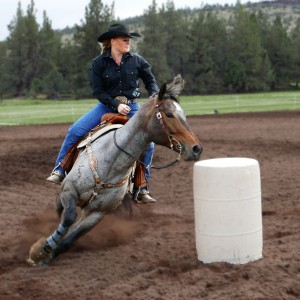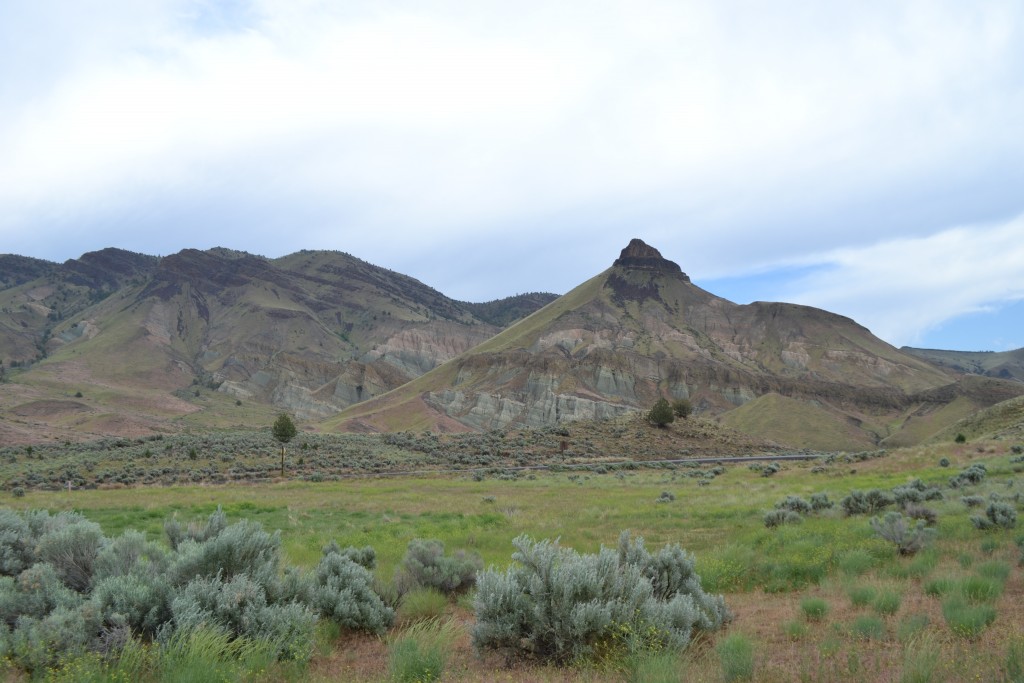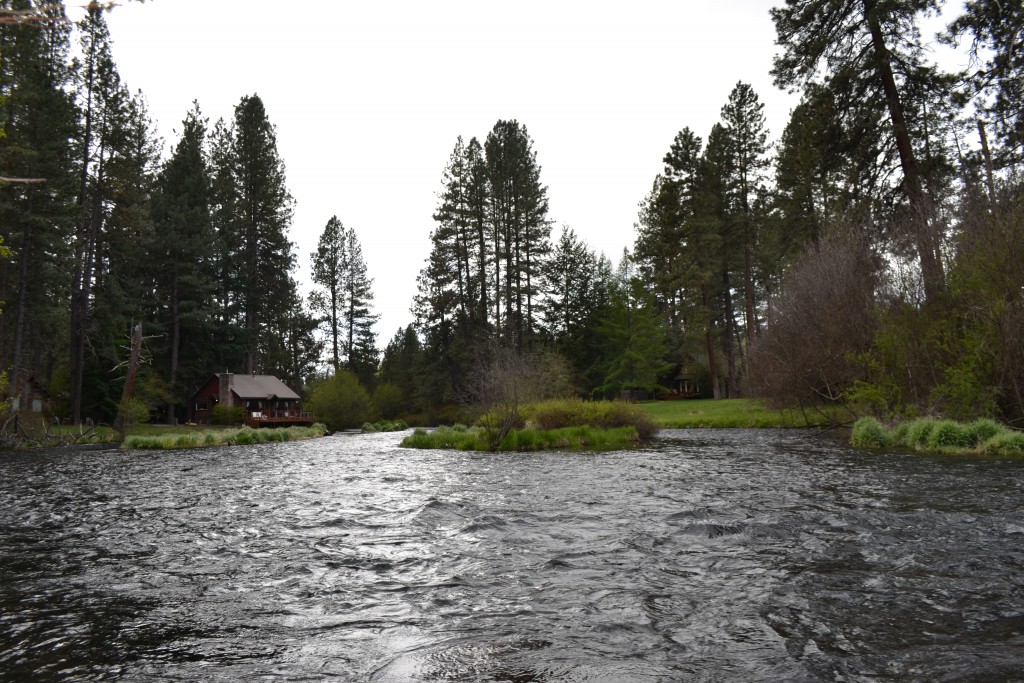In the spring of this year, folklorists Douglas Manger from Texas, and Joseph O’Connell from North Carolina, took to the highways and byways of Eastern Oregon to carry out OFN’s third year of our multi-year statewide folklife survey. Thanks to funding from the National Endowment for the Arts and the Oregon Historical Society, Douglas and Joe visited the Eastern Oregon counties of Union, Wallowa, Baker, Grant, Wheeler, Crook and Deschutes. Through this fieldwork, the OFN identifies and documents traditional artists who might later apply for our Traditional Arts Apprenticeship Program or be recommended for the Oregon Culture Keepers Roster.
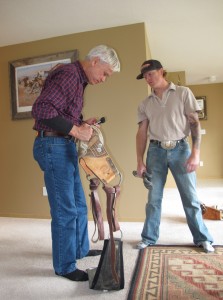 Douglas Manger has been working as a folklorist for twenty years. Early in his career, Manger served as director of the Northern Tier Cultural Alliance in Pennsylvania, where he documented folk artists and curated exhibits and other programs. Manger later managed the folk and traditional arts program at the Mid Atlantic Arts Foundation in Baltimore overseeing initiatives across nine states and jurisdictions. At Mid Atlantic, Manger project managed the award-winning publication, From Bridge to Boardwalk: An Audio Journey Across Maryland’s Eastern Shore. In 2007, Manger returned to his home state of Texas and founded HeritageWorks, which has been responsible for multi-year regional folklife field surveys in South and East Texas for the Institute of Texan Cultures in San Antonio, in Baton Rouge and vicinity for the Louisiana Folklife Program, in Eastern Oregon (Malheur and Harney counties in 2014; Deschutes, Crook, Baker, and Union counties, spring 2016) and the Portland Metro (fall 2016) for the Oregon Folklife Network.
Douglas Manger has been working as a folklorist for twenty years. Early in his career, Manger served as director of the Northern Tier Cultural Alliance in Pennsylvania, where he documented folk artists and curated exhibits and other programs. Manger later managed the folk and traditional arts program at the Mid Atlantic Arts Foundation in Baltimore overseeing initiatives across nine states and jurisdictions. At Mid Atlantic, Manger project managed the award-winning publication, From Bridge to Boardwalk: An Audio Journey Across Maryland’s Eastern Shore. In 2007, Manger returned to his home state of Texas and founded HeritageWorks, which has been responsible for multi-year regional folklife field surveys in South and East Texas for the Institute of Texan Cultures in San Antonio, in Baton Rouge and vicinity for the Louisiana Folklife Program, in Eastern Oregon (Malheur and Harney counties in 2014; Deschutes, Crook, Baker, and Union counties, spring 2016) and the Portland Metro (fall 2016) for the Oregon Folklife Network.
Joseph O’Connell,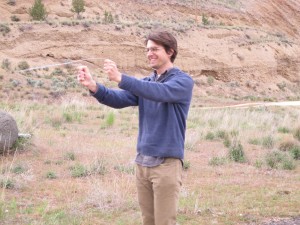 who received an MA in Folklore from the University of Oregon in 2009, works in public folklore, public media, and independent music. After leaving Oregon, he joined the staff of Traditional Arts Indiana (TAI) as the program’s primary fieldworker. O’Connell led several region- and topic-driven survey projects at TAI, including the first extensive cultural documentation of Indiana’s architectural stone industry. Now living in Raleigh, North Carolina, O’Connell contributes to projects of the North Carolina Folklife Institute, local NPR affiliate WUNC-FM, and the folk-rock band Elephant Micah. He spent several weeks during April and May of 2016 working with Douglas Manger to document folk artists in Wallowa, Grant, and Wheeler counties.
who received an MA in Folklore from the University of Oregon in 2009, works in public folklore, public media, and independent music. After leaving Oregon, he joined the staff of Traditional Arts Indiana (TAI) as the program’s primary fieldworker. O’Connell led several region- and topic-driven survey projects at TAI, including the first extensive cultural documentation of Indiana’s architectural stone industry. Now living in Raleigh, North Carolina, O’Connell contributes to projects of the North Carolina Folklife Institute, local NPR affiliate WUNC-FM, and the folk-rock band Elephant Micah. He spent several weeks during April and May of 2016 working with Douglas Manger to document folk artists in Wallowa, Grant, and Wheeler counties.
Culture Keepers of Eastern Oregon
By Douglas Manger
On the NW 6th Street approach to downtown Redmond sits an imposing bronze sculpture of a “buckaroo” cowboy, leaned forward in his saddle, cutting a yearling heifer. The piece by Greg Congleton called “Western Swing” celebrates one of the quintessential folkways of the region—the high desert cattle round-up. “The rhythm and beauty of a working cow horse in action is a joy to behold,” reads the artist’s statement. “This athletic and graceful partnership is the result of lots of training time, commitment, and trust.”
Ramrod straight in the saddle, Tonya Rosebrook looks every bit a serious horsewoman. That she is; her family is three generations deep in the rodeo tradition. At the evening’s barrel racing competition outside of Redmond, with a quarter moon overhead, Rosebrook and her horse, Sam, are about to make poetry together working the cloverleaf pattern. “It’s a dance,” she explained; “if your partner (the horse) steps on your toe, we have an issue; if your partner moves with you, it’s beautiful.” Rounding the last barrel, the crowd comes alive, cheering her on. In less than twenty seconds, it’s over. In the bigger picture, however, that short burst of time translates to years of training under her grandfather’s steady hand. “I wouldn’t be who I am without what he did for me,” Rosebrook observed. Along with a love of competition, her grandfather instilled in her a deep and abiding respect for the rodeo tradition. “I got to live my dream growing up,” she added with a smile.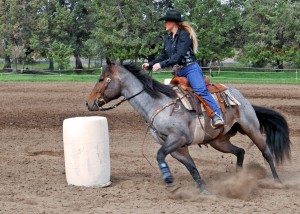
Now, with the benefit of time, Rosebrook understands the full implication of the hours of training gifted to her, to make her who she is today. She also understands her obligation to pass her knowledge on to future generations. Folkway traditions rely on this critical passage, one to another. The Rosebrook thread, key as it is, is but one among many that when taken as a whole define the folk mores—the customs, values, and behaviors—of a place.
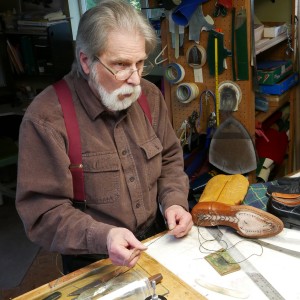 D.W. Frommer also understands the larger context of folkways. Redmond’s own nationally acclaimed boot and shoe maker approaches his work with a “sense of passion and animation,” qualities he finds lacking in today’s culture where so many float from one job to the next. For him, becoming immersed in the work is key. “[When you] become the work, you become the actions, and you become the concepts,” he declared. “If the self is there,” he added, “it’s in the way.”
D.W. Frommer also understands the larger context of folkways. Redmond’s own nationally acclaimed boot and shoe maker approaches his work with a “sense of passion and animation,” qualities he finds lacking in today’s culture where so many float from one job to the next. For him, becoming immersed in the work is key. “[When you] become the work, you become the actions, and you become the concepts,” he declared. “If the self is there,” he added, “it’s in the way.”
With his gift for insight, Frommer brings home the real value of the folk craft continuum in a boot and shoe making tradition over 10,000 years in the making: “All of this that had come down to you is a gift,” he explained. “Each [maker] who spends his time teaching an apprentice is gifting that [person] with a career, with a life, with something to give his [or her] life purpose.” To truly be a part of a tradition, Frommer continued, “one must feel a sense of obligation to those makers who came before, who refined the methods, who perfected the tools of the trade.” At times, Frommer feels the presence of those who came before observing his work. “You want their approval, you want them to know you are doing it right,” he concluded.
In the end, O’Connell and I documented over 40 culture keepers for the Eastern Oregon Folklife Survey across the seven-county focus area. Each site-visit consisted of a one-hour interview and a photo session to document the culture keeper and his or her work. All field materials are now a part of the permanent folklife archive at the University of Oregon, managed by Oregon Folklife Network.
Our effort was to record unique culture keepers at their home place, particularly those held in high esteem for the craft they are upholding, their striving for excellence, their giving back while teaching others. In every community large or small, rural or urban, such keepers play an integral role in shaping the character of a place. From poets to horse trainers, from mushroom pickers to water witchers, culture keepers are at work in the everyday practicing skill sets passed from one generation to the next, making Oregon its own unique place.
Rivers, Rocks, Rodeos, and Writing: Cultural Traditions in Four Eastern Oregon Counties
By Joe O’Connell
In Oregon Folklore, Suzi Jones reminds readers that the state goes well beyond its iconic Willamette Valley. “Two-thirds of Oregon looks a lot more like a desert than a rain forest and has more dry gulches and gullies than waterfalls,” she writes.
In April and May of 2016, I visited four counties in this underrepresented “two-thirds” of the state to do field research for the Oregon Folklife Network. I talked to people who live in Wallowa, Grant, Wheeler, and Deschutes Counties about the cultural forms that, for them, define Oregonian places and communities.
Rivers
The Metolius. The Grand Ronde. The John Day. The Snake. These are just a few of the rivers that wind their way through the landscape and social life of Eastern Oregon. No tradition illustrates the cultural significance of local waterways more clearly than the thriving practice of fly fishing.
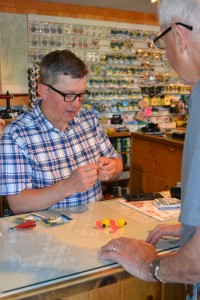
The small-town retreat of Sisters, in Deschutes County, harbors a large community who work professionally, or as a serious avocation, in fly fishing trades. For many, it is a paradise of year-round fishing on multiple major trout streams and dozens of nearby lakes.
In this community, fly fishing knowledge, skills, and material culture circulate in social settings, among family and friends. Fishers share tips on everything from building bamboo rods to recognizing insect species (“matching the hatch”).
“So much of what you learn about fly fishing is not from a book,” points out fishing guide and casting instructor Mary Ann Dozer. “There’s this real tradition of passing it down and passing it down–all aspects of it.”
Rocks
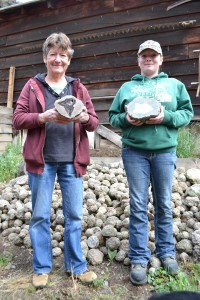
On the border of Crook and Wheeler Counties, mother and daughter team Cindy Kopcinski and Janis Smith
mine Oregon’s official state rock, the “thunder egg.” Somewhat akin to geodes, thunder eggs look unspectacular on the exterior, but reveal complex, crystalline formations when sliced or broken open.
For Kopcinski and Smith, unearthing and refining the thunder egg is a tradition tied to family and community memory. Kopcinski’s parents and husband, Leonard “Kop” Kopcinski, were also avid rock hounds. And the history of thunder egg mining at Lucky Strike goes back to a time before European settlement of the area.
Enter any home in Wheeler County, and you’re likely to find thunder eggs displayed in a variety of forms: polished halves on a mantle, mobiles of hanging fragments in a bedroom window, or even a bathroom floor surfaced with thunder egg tiles.
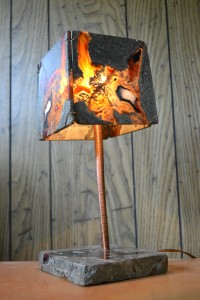
Rodeos
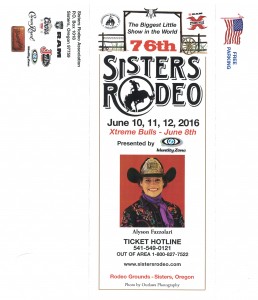 Every county in Eastern Oregon boasts a major rodeo event. Tiny towns like Sisters, Spray, and Joseph are significant stops on professional rodeo circuits, drawing athletes and presenters from around the western states.
Every county in Eastern Oregon boasts a major rodeo event. Tiny towns like Sisters, Spray, and Joseph are significant stops on professional rodeo circuits, drawing athletes and presenters from around the western states.
In Enterprise, the annual Stock Growers Ranch Rodeo is a rodeo by and for Wallowa County residents. Even the events themselves reflect local culture.
Pat Dougherty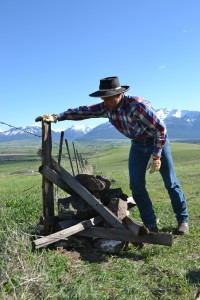 regularly competes in the day’s most unusual competition. Entrants race to build a single fence post in the “rock jack” style that has come to represent the Wallowa Valley and its cattle ranching heritage. Dougherty’s quick work has made him a repeat victor of the contest and earned him the tongue-in-cheek title “World Champion Rock Jack Builder.” A sense of humor is characteristic of the event, which raises scholarship money for Wallowa County youth heading to college.
regularly competes in the day’s most unusual competition. Entrants race to build a single fence post in the “rock jack” style that has come to represent the Wallowa Valley and its cattle ranching heritage. Dougherty’s quick work has made him a repeat victor of the contest and earned him the tongue-in-cheek title “World Champion Rock Jack Builder.” A sense of humor is characteristic of the event, which raises scholarship money for Wallowa County youth heading to college.
Writing
Whether publishing in local newspapers or performing at community festivals, Eastern Oregonians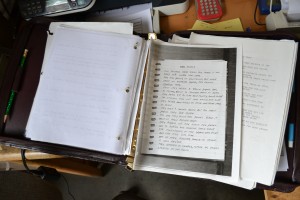 have a knack for capturing their everyday lives in narrative form.
have a knack for capturing their everyday lives in narrative form.
In Mitchell, you can find Dan Cannon holding forth at auctions, funerals, and any other occasion that calls for an orator. He tells stories and reads poems that transform local heritage into gripping and often hilarious storytelling. One of his best-loved works, “Tiger Town,” relates the legend of a saloon shoot-out that took place in Mitchell in 1946.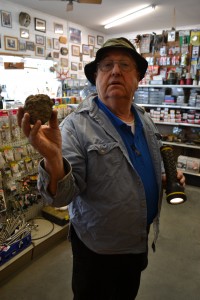
Cannon will gladly claim the mantle of “cowboy poet,” but not without his personal twist. Sometimes, to set himself apart from the typical theatrics of the genre, Cannon wears a hubcap as a belt buckle, a false handlebar mustache, and the tops of western boots duct-taped overtop his tennis shoes.
Reflections on a Region
Storytellers, rodeo athletes, fly tiers, and rock hounds can be found across the western states and beyond. But the way Eastern Oregonians express these iconic traditions is uniquely their own.
The people I interviewed didn’t say much about the American West or Eastern Oregon as a whole. They were much more likely to explain what they do in terms of their immediate locality and community. Our conversations explored how broad traditions, like rodeo sports or cowboy poetry, take on new dimensions in local places.
Communities point to and celebrate these variations. Sure, lots of western towns have rodeos, but only Enterprise holds a rock jack competition. And, without a eulogy from a local storyteller, a funeral in Mitchell would be incomplete.
The traditions people held closest, I found, were the ones they had reshaped to become their own peculiar province.
